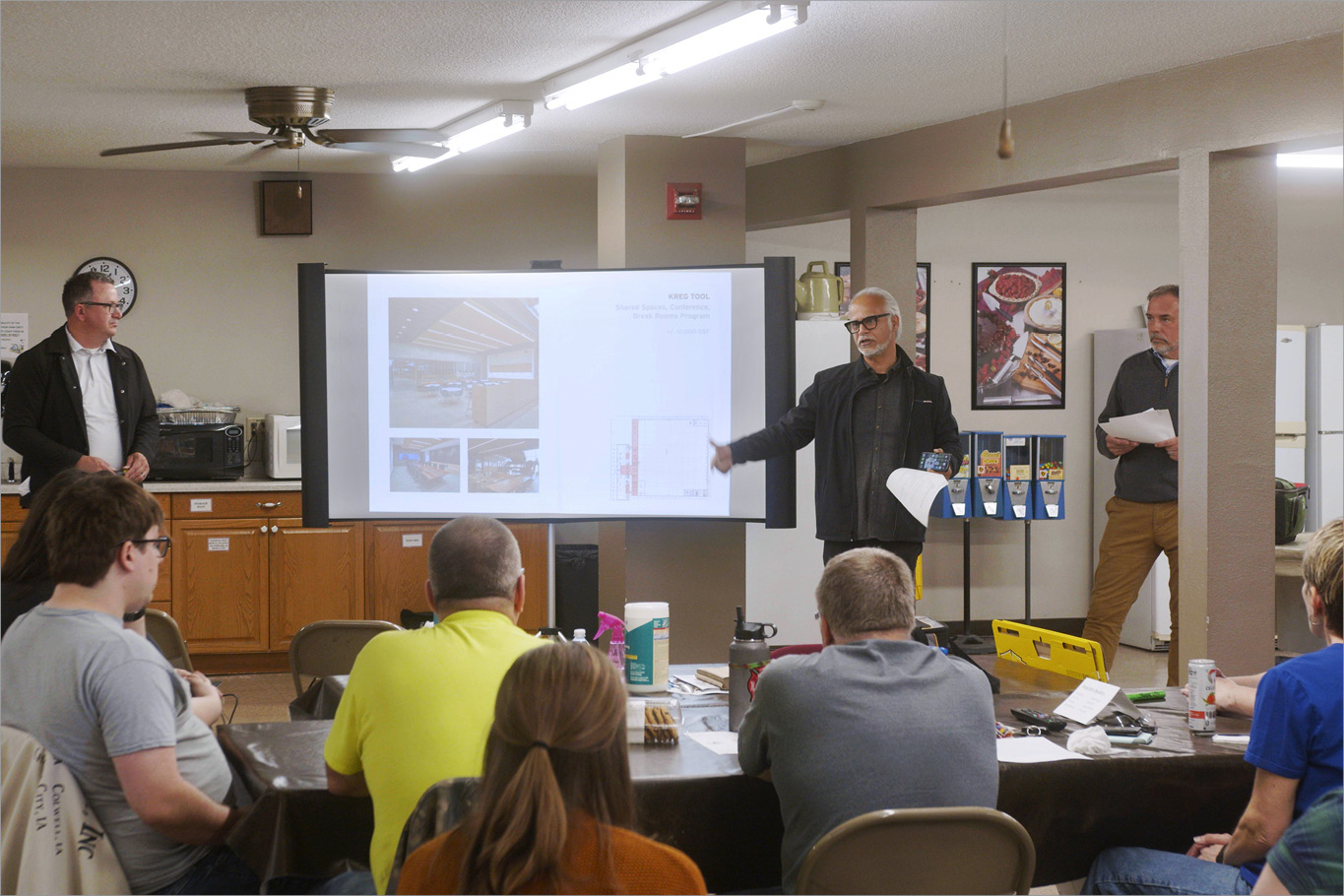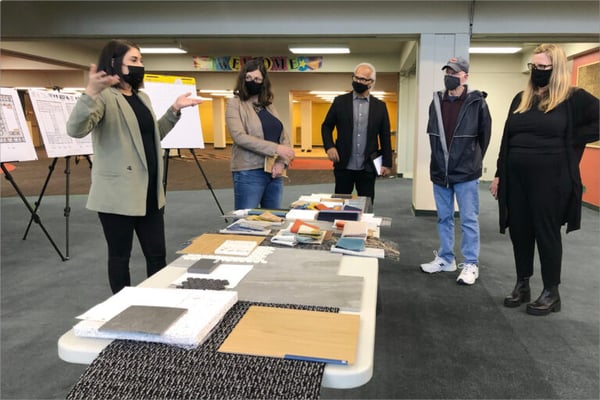A Client’s Time Commitment During the Design Process

Thankfully, a building owner’s time commitment is not constant and changes throughout the architectural process. While some phases require a regular meeting cadence, others involve infrequent check-ins.
This article will discuss the amount of time a building owner devotes to a typical building project. You will learn about:
- The core group of decision-makers that meet with your architect
- The meeting cadence for each design phase
After reading, you will better understand who to include in the design process and the time commitment ahead.
Establishing a Core Team of Decision-Makers
Before discussing time commitments, let’s discuss who you should include in the design process.
In the early stages of the project, your organization will need to form a core team of decision-makers. Although some early meetings involve a larger group, most involve your core group. These decision-makers will consider and establish goals, review documents and graphics, and approve design decisions.
Typically, the core team represents a cross-section of your organization’s leadership or those with a financial stake in the project.
Along with a core team, you will also need to select a person to serve as the main point of contact. Establishing a contact person streamlines communication and leads to a smoother process.
Time Commitments by Design Phase
Throughout the architectural process, the meeting frequency will ebb and flow. Your architect will host several early workshops to set goals, understand your needs, and gather ideas.
These workshops typically involve a larger group of stakeholders to build consensus. As the process progresses, your core team will start meeting with the design team regularly.
Meeting frequency depends on your project type and complexity. The more complex the project, the more meetings you can expect.
Here’s what you can expect from a typical project:
Pre-Design
Pre-Design meetings usually involve a larger group of stakeholders. Depending on your project, your architect may host:
- Programming workshops
- Visioning workshops
- Benchmarking tours
These workshops are opportunities for your architect to meet with a cross-section of your team, learn about their needs, and gather their input. Ideas discussed in these meetings will form the foundation of the design.
Some projects may even involve public input. For example, school districts may survey the public to pass a bond referendum. Master planning also has some level of public engagement.
These Pre-Design workshops are crucial to a successful project. Although these meetings are infrequent, they may require extra planning to coordinate a larger group.
Schematic Design
While Pre-Design meetings involve a larger group of stakeholders, Schematic Design meetings mostly involve your core team. During this phase, your architect will develop concepts, ask for feedback, and provide progress updates.
Meetings will be more infrequent, usually occurring once every two weeks. Once you’ve nailed down a concept, you will start meeting with your architect more often.
Design Development
Design Development requires the most intensive time commitment from your team. In this phase, you will determine materials, systems, equipment, and finishes. Your architect will present options and discuss price estimates, helping you make decisions.
Since this phase requires more decision-making, you can expect weekly meetings with your architect. Your project manager will work with you and your team to establish a regular meeting cadence.

In Design Development, you will determine materials and finishes.
Contract Documents
From a design perspective, the Contract Documents phase involves the least amount of architect-client interaction. In this phase, your architect will create drawings and specifications to explain the design intent to the contractor.
Although this phase requires less client input, your architect should maintain contact. On most projects, your architect will meet with you at scheduled intervals to deliver documents and show progress.
This phase may end with a formal “page turn” or review where your architect will walk you through the plan set, discuss highlights, and answer questions.
Construction
Construction meetings differ project-to-project. Usually, your contractor will lead these meetings, though your architect will also join. You will likely discuss construction progress and address any issues or changes. Most contractors will meet with you once every couple of weeks.
At this stage, the contract team focuses on timely construction progress, while your architect focuses on observing the work and making sure it aligns with the design intent.
Learn more by reading about an architect’s role in construction.
Depending on your needs, you may continue to meet with your architect during construction. For example, if your project involves signage or FF&E selection, you can expect additional meetings.
Learn More About the Design Process
The design process involves multiple steps. Before working with an architect, establish alignment and learn your responsibilities.
In the early stages, you may have to coordinate meetings with a larger group of stakeholders. Your core group will meet more often as a concept develops, and meetings will taper off as your architect produces contract documents.
Now that you better understand your time commitment, learn how long the process should take by reading about the four factors that influence project timelines.